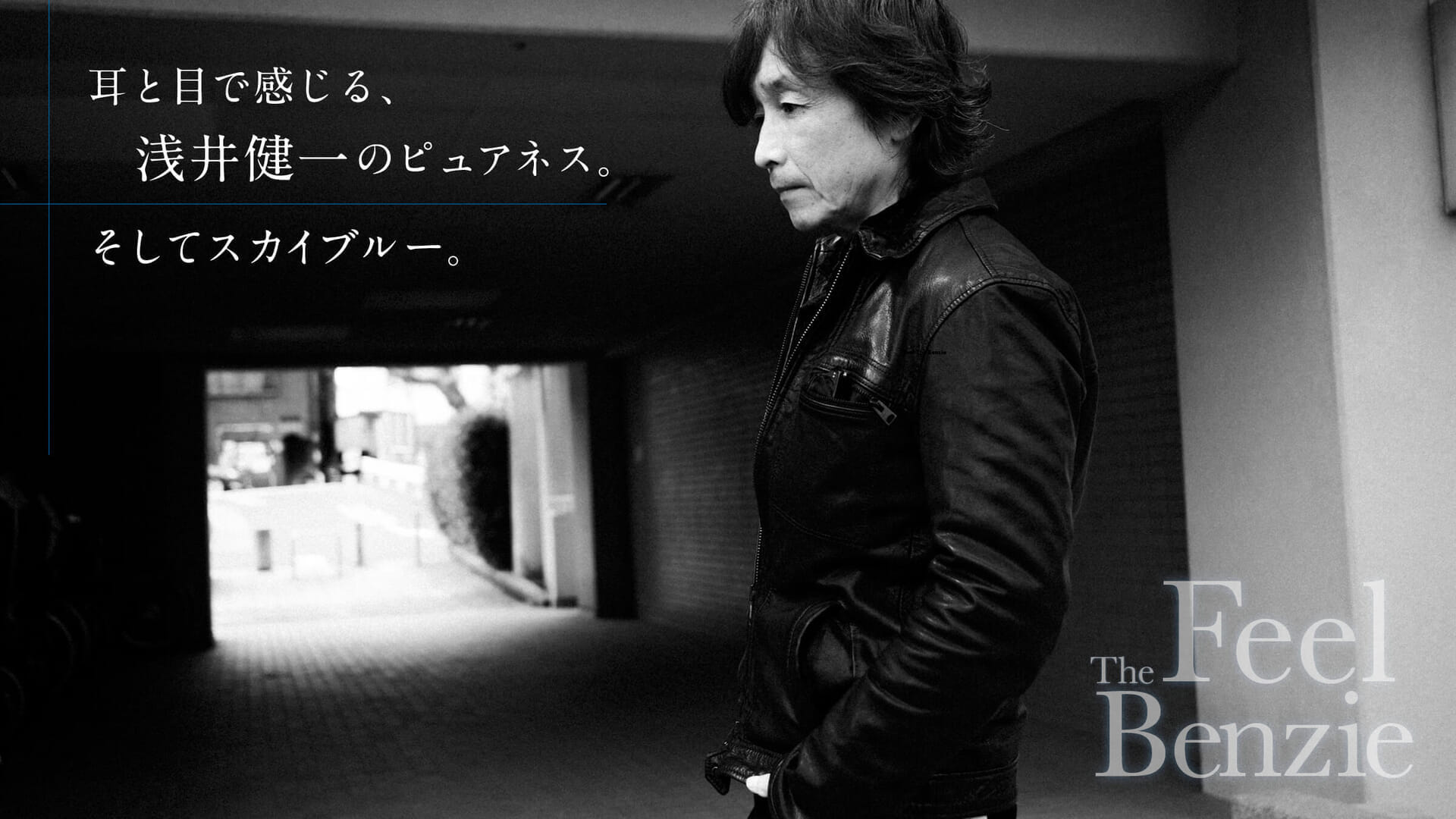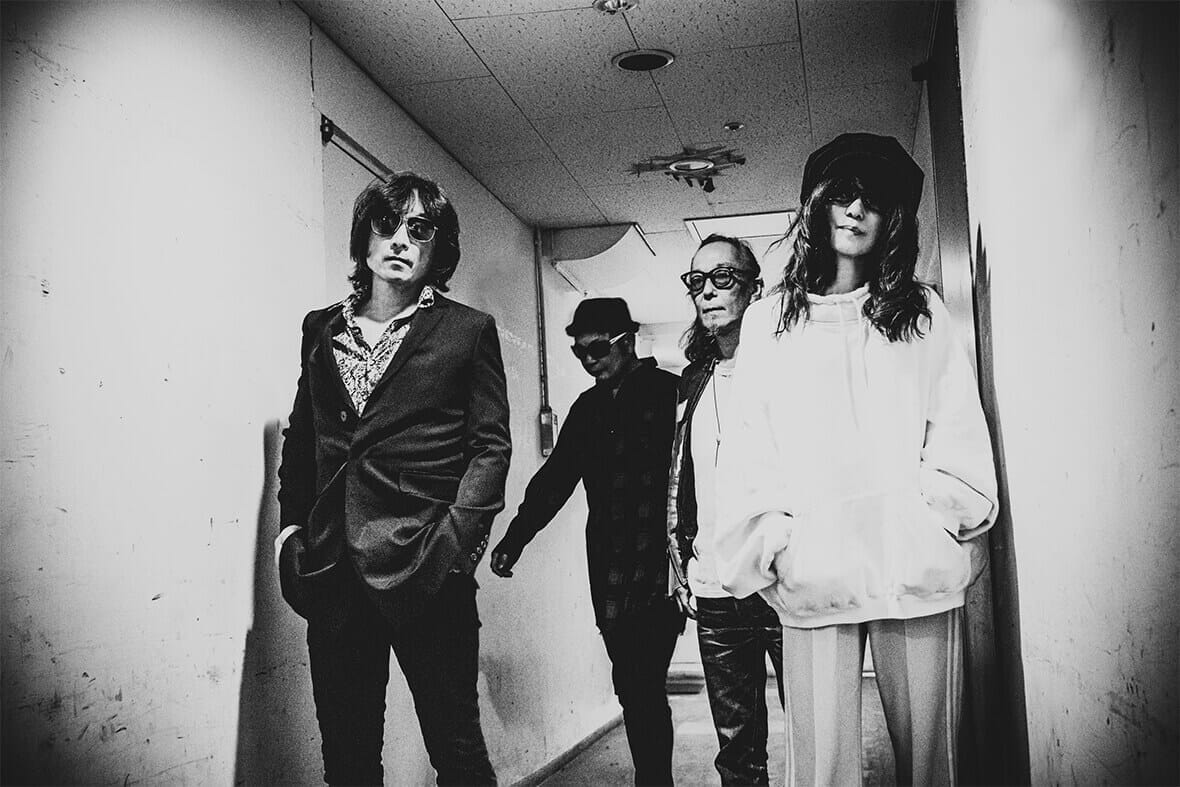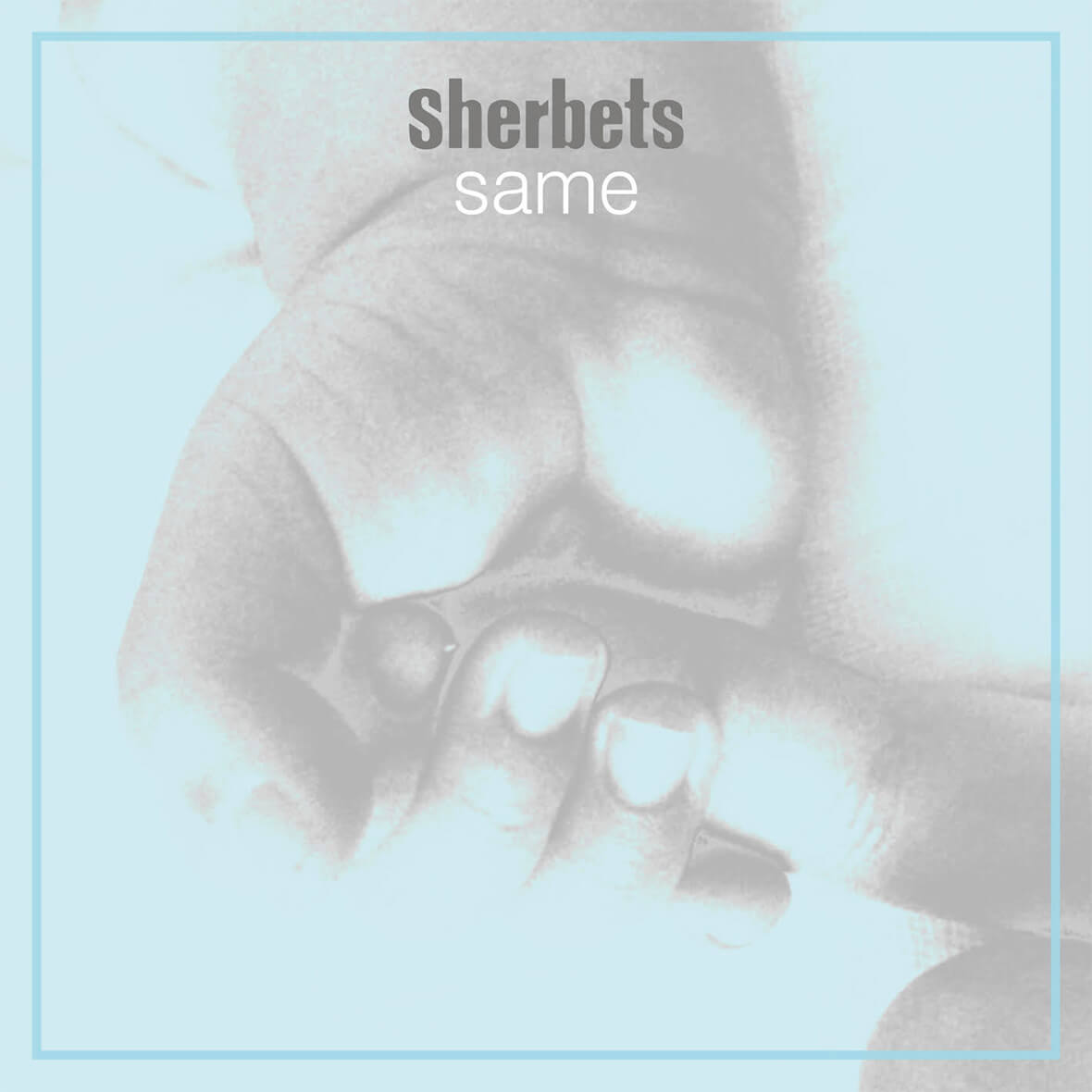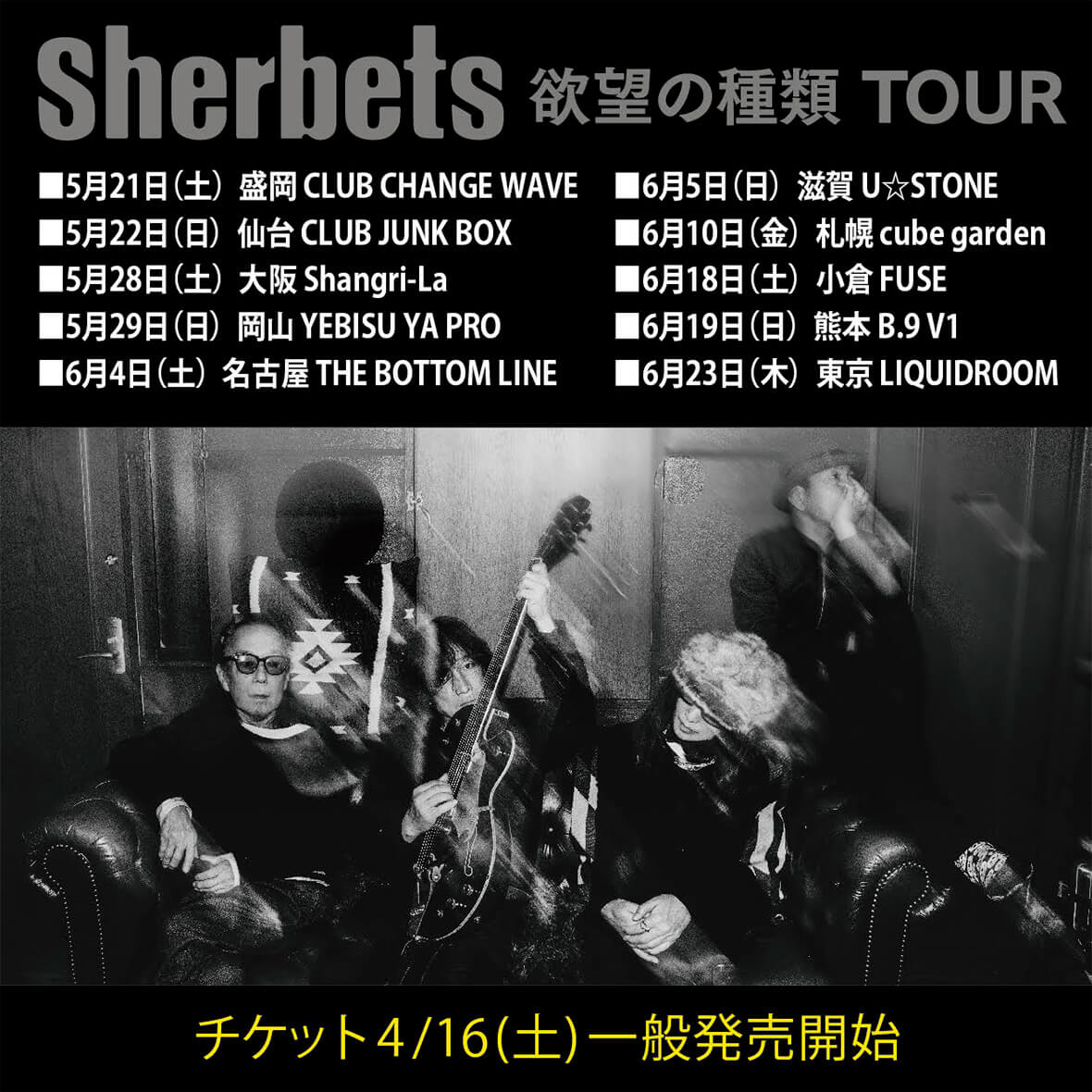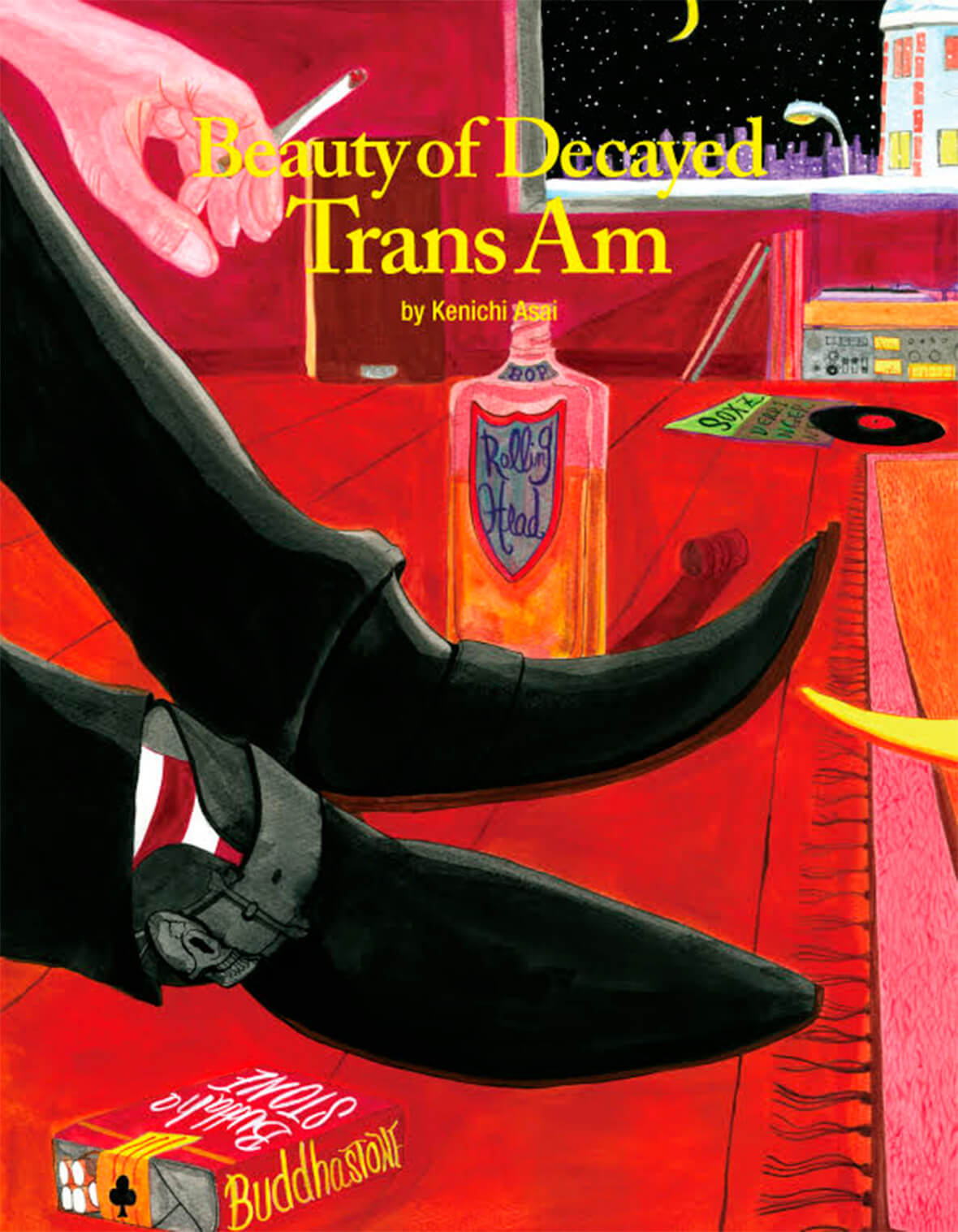Narrative artwork, as music to the eye .

-The book "Beauty of Decayed Trans Am," which will be released at about the same time as "SAME," is a large book of over 200 pages. The essays that are interspersed throughout the book are also worth reading, and it is a compilation of Mr. Asai's creative side outside of his musical activities.
Thank you . I worked very hard on it .
-I was also impressed by the use of both watercolor and digital painting, as I had the image of not trusting anything too digital.
Watercolor is done as a painting. These (digitally colored artwork) were designed when I was making goods for sale, and I completed them in the computer. Some of them were not selected, and I wanted to present them.
-. Recently, under the name of STRIPE CAT DESIGN ART SERVICE, you have been taking on designs for corporate projects as well.
It all started when a pizza shop in Kyoto asked me to design a T-shirt for them, and since I said I was a fan, I said yes. I was told that the label was in a difficult situation, so I said, "Let's get the design division up and running. I was told that this was a difficult situation for the label, so we decided to start a design division, and we started working on it in earnest.
-Isn't there a difference between designing freely and doing client work?
Not at all. . I'm working very hard at the moment. I think my attitude is different when I have clients, but they expect a lot from me, so I don't want to betray them. But they expect a lot from me, and I don't want to betray them. I do my best on a huge variety of projects, but it is also difficult to set a price. Recently, I've been getting a better idea of what I can afford to spend my time on, but when I tell them the price, some of them say, "If it's that expensive, I'll quit," while others say, "I'll still ask you to do it for that price. I felt that if they were willing to pay that much, I had to meet their expectations. That's why the price is ...... point. Various types of contracts exist.


-In the book, you have included American cars, motorcycles, cats, cream sodas, and other motifs that are standard in Asai's illustrations.
I think mid-century, or design from the 1950s to the 1970s, is cool. Especially American . I think it's sophisticated, and I simply love that feeling. . Whether it's furniture or houses, I like the late 60s to the 70s.
-Some of them were paying homage to Mucha.
You've been exposed. Yes . . and then there's Tom and Jerry and Snoopy and so on. Isn't it about taking something great and putting your originality into it? People in the world all think something is great, and that's how it starts, right? I'm the same way. I'm inspired by various things, like, "I didn't know there was such a composition," or "Let's try to write in my own way with this composition. Then, I mix in scenes that remain in my memory.


. - I felt that all of the watercolor paintings in the book were narrative, as if they were cut from a scene in a road movie. For example, in "Dry Skin," the text even explains what the person in the painting is drinking, and I thought that the storytelling is a result of the well-developed setting.
He asked me to write something, so I just wrote what came to my mind when I saw the picture. It's funny, isn't it? You don't think it's calpis, do you?
-. "Dry Skin" is a picture of the scene he saw during the shooting of the music video for "Johnny Hell" (laughs). Dry Skin" is a pictorial representation of the scene you saw during the shooting of the music video for "Johnny Hell," and both the picture and the music are fantasy worlds created from your experience, and although they are expressed in different ways, they are all connected.
Of course. It's the same person who made them. They are definitely connected somehow.
-I think it is easier to visualize the scenes of the music in your mind when you view the new album and the art book together.
Oh, by all means . Get both and listen to them as you watch. If it makes you happy to hear or see them, I think that's the best thing you can do.


